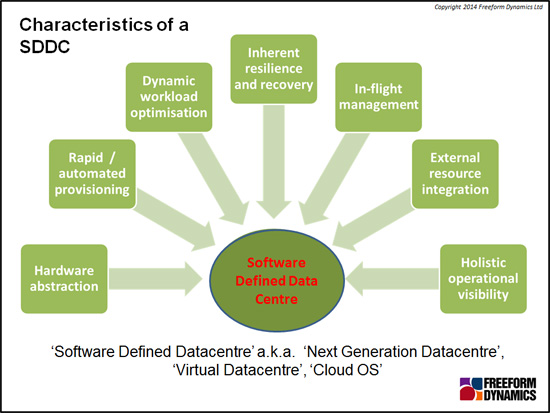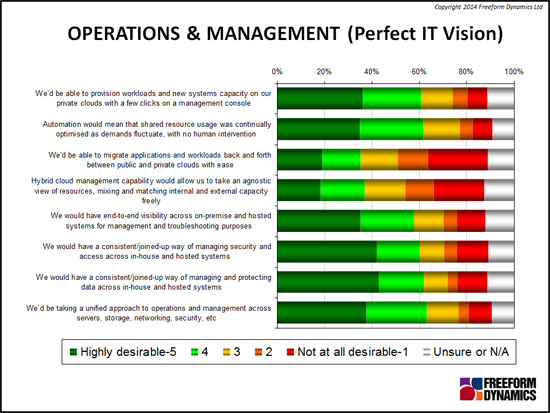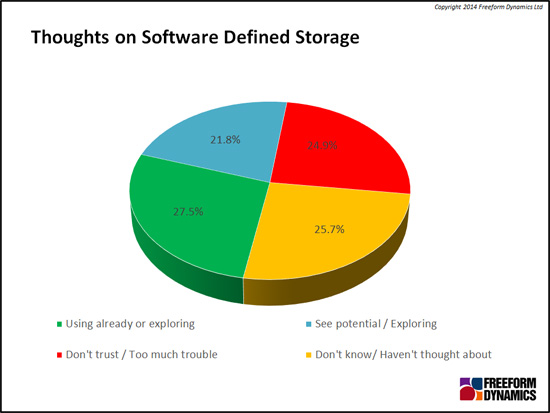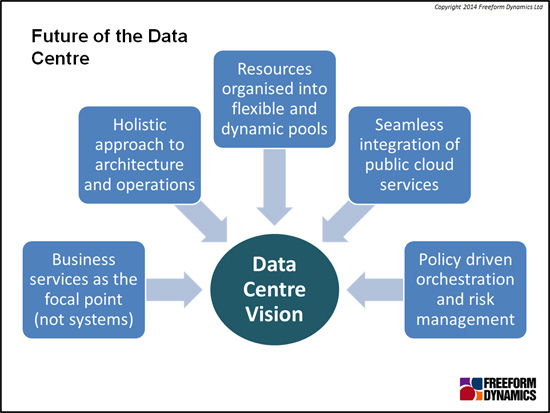Recently the vendor community has put considerable efforts into promoting the ‘Software Defined Data Centre” (SDDC) as the vision of how things will be in the future. But is this where things are really going? And if you see the value in the approach, how do you get there from where you are now?
The term ‘Software Defined’ anything, be it storage, networking or data centre, is marketed as a new concept, but as every IT professional knows, software has always defined IT. After all, the only reason anyone has data centres, servers, storage or networks is in order to run software, usually applications that support key business services.
The current buzz word craze is ultimately trying to market the advantages of creating IT systems that are more flexible than in the past. In particular SDX style terminology attempts to encapsulate the idea that the resources within the data centre should be able to be reallocated as business service demand varies.
Figure 1
Figure 1 encapsulates at a high level the characteristics that a SDDC will need to possess. Common sense indicates that such characteristics are likely to be respected by potential customers. But are organisations ready for an automated, flexible world IT world where resources are pooled and allocated without the need for much, if any, physical reconfiguration of resources?
Figure 2
The results in Figure 2,taken from a web survey executed by Freeform Dynamics at the end of 2012, indicates that capabilities to speed the deployment of workloads within a few clicks and automatically optimise the use of IT resources were already seen as being desirable by a majority of respondents eighteen months ago, prior to much of the ‘software defined’ marketing. Given that these capabilities are at the heart of software defined datacentres it is clear that SDDC is targeted at a market that sees value in such capabilities.
However, marketing bordering on the edge of hype can be counter-productive.
Figure 3
Figure 3, taken from a web survey conducted by Freeform Dynamics, illustrates that there is today an almost fifty-fifty bifurcation in the IT community. Have of the IT professionals surveyed either see the potential of one element of SDDC, namely software defined storage (SDS), are already testing it or have it in production to some degree. A very similar percentage either don’t trust the approach, consider it too much trouble or simply haven’t thought about it much.
Given this survey only focussed on SDS, the moderately high degree of scepticism and lack of knowledge could reflect the relative immaturity of SDS solutions or simply that few IT generalist have had much opportunity to consider software defined storage in depth. Even so, this poses significant challenges for proponents of SDS in particular, and SDDC in general, as they promote such solutions.
Among the challenges are some fundamental issues that vendors must address to help potential adopters understand the specific capabilities current solutions already possess as well as clearly delineating their limitations. Beyond this vendors will need to help their customers understand how to make the transition to SDDC operations.
In particular, the processes that today form the backbone of many IT processes will need to be modified, perhaps radically. At the same time the make-up of IT teams is likely to require significant adjustment with many more IT professionals being required to become multi-skilled and function as part of integrated teams rather than as standalone units looking after server, storage, networking, security etc. In line with this, the survey referenced in Figure 2 showed that very significant numbers of IT professionals see better integration of IT working teams as being desirable.
This leaves then leaves the largest challenge of all, namely how can organisations move from the partly virtualised, relatively siloed systems utilised today to the automated, flexible SDDCs of tomorrow? (Figure 4)
Figure 4
The starting point will be getting hold of an accurate knowledge of the IT systems used today and the business services they support. From this information it is essential that business and IT teams together create a catalogue of services to be supported, the SLAs they require and their general governance needs, as well as any security constraints upon specific services.
From here it will become possible to work out how to modify the IT infrastructure going forwards without having to rip and replace everything, instead building steadily from today to tomorrow. At the heart of the SDDC will be concepts of running IT as a Service Delivery operation rather than as an IT infrastructure maintenance operation. Automation and service quality reporting will be factors high up the management characteristics to be implemented.
In many respects the SDDC of tomorrow will probably still resemble, at least superficially, the data centres of today. But significant changes will be apparent with the adoption a service centric mentality in how IT is run arguably being the most visible, and certainly the most important. Running IT as a business service delivery organisation using the SDDC will also permit IT to help the organisation maximise new opportunities whilst minimising operational costs.
CLICK HERE TO VIEW ORIGINAL PUBLISHED BY

Tony is an IT operations guru. As an ex-IT manager with an insatiable thirst for knowledge, his extensive vendor briefing agenda makes him one of the most well informed analysts in the industry, particularly on the diversity of solutions and approaches available to tackle key operational requirements. If you are a vendor talking about a new offering, be very careful about describing it to Tony as ‘unique’, because if it isn’t, he’ll probably know.










Have You Read This?
From Barcode Scanning to Smart Data Capture
Beyond the Barcode: Smart Data Capture
The Evolving Role of Converged Infrastructure in Modern IT
Evaluating the Potential of Hyper-Converged Storage
Kubernetes as an enterprise multi-cloud enabler
A CX perspective on the Contact Centre
Automation of SAP Master Data Management
Tackling the software skills crunch